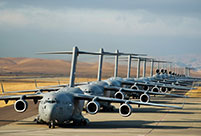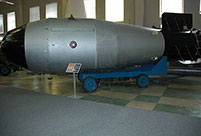 Fan Bingbing's "Queen style" in new play
Fan Bingbing's "Queen style" in new play
 Lingerie show at 2014 Miss China
Lingerie show at 2014 Miss China
 Top 10 pricey destinations for studying abroad
Top 10 pricey destinations for studying abroad
 Female bus driver drives Land Rover for commuting
Female bus driver drives Land Rover for commuting
 J-10 fighters show aerobatic stunts in smog-free sky
J-10 fighters show aerobatic stunts in smog-free sky
 Top 10 charming female soldiers of the PLA
Top 10 charming female soldiers of the PLA
 Charming contestants of Shanghai Int’l Model Contest
Charming contestants of Shanghai Int’l Model Contest
 Most amazing chi-pao beauties
Most amazing chi-pao beauties
 7 deadly animal attacks
7 deadly animal attacks
 Picturesque autumn scenery of Hongshan Army Horse Ranch
Picturesque autumn scenery of Hongshan Army Horse Ranch
ZHENGZHOU, Oct. 28 -- China's south-to-north water diversion project, expected to start operation in the coming days, will ease the drought that has been plaguing north China, greatly improving grain output, officials and experts have said.
About 13 percent of water will be assigned for agriculture every year, which will add six billion cubic meters of water for ecological and agricultural use, a blessing for the thirsty farmland, said E Jingping, director of the South-North Water Diversion Office of the State Council, China's cabinet.
There are currently 16 million mu (1 million hectares) of dry land wheat being planted in Henan Province with an average output of 150 to 200 kg per mu, said Huang Wei, an official with the provincial agriculture department.
"With water from the water diversion project, the average output would nearly triple to 400 kg to 500 kg per mu," said Huang.
The 34 counties receiving water from the project are all major grain-producing areas, said Liu Zhengcai, deputy head of the provincial south-to-north water diversion office.
He says 3.8 billion cubic meters of water assigned to Henan will greatly improve the grain production.
"The 50 million cubic meters of water assigned to our county is enough to guarantee the urban use of water, so water for irrigation will not be occupied like before," said Han Xiaowei, deputy head of the water affairs bureau of Huaxian County, the largest grain-producing county in Henan.
Currently Henan is suffering the worst drought in 63 years with more than 27 million mu of crops thirsty of water for irrigation, said Huang.
The water diversion project will gradually restore the ecological environment in north China and improve the grain production and guarantee the country's food safety, said Wang Hao, an academic with the Chinese Academy of Sciences.
The middle route of transfer project will see a massive 9.5 billion cubic meters of water per year pumped through canals and pipes from the Danjiangkou reservoir in central China's Hubei Province to the northern provinces of Henan and Hebei and to Beijing.
The project was conceived by late Chinese leader Mao Zedong in 1952. The State Council approved the ambitious project in December 2002 after debate lasting nearly half a century.
 U.S. air force transport planes row up on base
U.S. air force transport planes row up on base Post-85s female pilots and their mission
Post-85s female pilots and their mission Century-old public bath closes door in Beijing
Century-old public bath closes door in Beijing Shocking! Photos of Chinese fighters revealed
Shocking! Photos of Chinese fighters revealed World's most intimidating nuclear weapons
World's most intimidating nuclear weapons Standard faces for each countries in the world
Standard faces for each countries in the world Netizens fall in love with champion swimmer Ning Zetao
Netizens fall in love with champion swimmer Ning Zetao Vibrant 21-year-old and her own Cheongsam brand
Vibrant 21-year-old and her own Cheongsam brand Fashion style: Faye Wong vs Cecilia Cheung
Fashion style: Faye Wong vs Cecilia Cheung Top 10 most dangerous jobs in the world
Top 10 most dangerous jobs in the world  Top 10 fifth generation jet fighters in the world
Top 10 fifth generation jet fighters in the world Top 10 Chinese goddesses
Top 10 Chinese goddesses  Top 20 hottest women in the world in 2014
Top 20 hottest women in the world in 2014 Top 10 pure beauties in showbiz
Top 10 pure beauties in showbiz  Top 10 world's highest-paid models 2014
Top 10 world's highest-paid models 2014 The most gorgeous Chinese women
The most gorgeous Chinese women Top 10 most handsome faces in Asia
Top 10 most handsome faces in AsiaDay|Week|Month